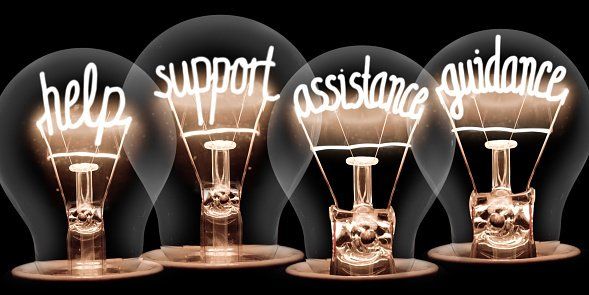Great Coaching Doesn't Focus on Giving Advice

A leader’s job is to support their employees to success. This includes ensuring employees are clear on what is expected of them, sharing important information, and developing necessary skills. It also includes providing positive feedback to encourage employees in what they are doing well and to kindly provide corrective feedback to help them perform even more effectively.
Leaders worth following also coach employees from being dependent on them, to being independent, to being interdependent with their colleagues.
Guiding employees to be independent and interdependent requires leveraging their knowledge and skills for diverse tasks and a variety of circumstances. This requires that leaders help their employees expand their understanding of how to apply their knowledge and skills as they are assigned new tasks and asked to work on different challenges. This increases individual job satisfaction, team morale, and organizational results.
Yet, many leaders have a tendency towards micromanagement such as telling people specifically how to do each new task and regularly solving problems for them. When leaders learn how to support and trust experienced employees to handle day-to-day workplace variables independently, it frees the leaders to support others in developing their capacity and to address higher level tasks.
Let’s explore a coaching approach that positions leaders to develop employee competence and confidence, the precursors for independence, interdependence, and collaboration. When leaders use coaching skills they can guide their employees to reflect on their strengths and growth areas and develop the ability to apply their knowledge and skills in new situations. This involves having frequent 2-way one-on-one conversations with employees using open-ended questions and reflective listening. For example:
The leader:
1. Asks the employee what specific, measurable goal or end result they are working to achieve.
2. Restates the end result and checks with the employee if they have accurately understood what they said.
3. Asks the employee what progress they have made towards this goal and listens carefully to their answer. The leader periodically summarizes what they heard to be sure she is understanding.
4. Asks the employee what actions they still need to take to achieve the goal, periodically checking she has heard the employee’s intent.
5. Asks additional questions to guide the employee to listing all of the significant steps required to achieve the goal. Only if the employee is missing critical elements of the work or is stumped, does the leader make suggestions of how the employee might proceed.
6. If, and only if, the employee cannot fully develop their action plan themselves, asks the employee if they would like a suggestion. Only if the employee says yes, the leader shares their ideas. If the employee doesn’t want suggestions but hasn’t developed a complete plan, then the leader asks the employee to take some time to think about their action plan. Before ending this meeting, the leader asks the employee to set a date, time, and location to reconvene the conversation.
7. After a potentially successful action plan has been developed, asks what resources, information, training, or help they need to achieve the goal.
8. Asks how she, herself, can help them. The leader confirms what she will do to support the employee.
9. Asks the employee to state when and how they should connect for accountability. The leader may need to ask further questions until a specific, feasible approach and time are agreed to.
When leaders support their employees through such a self-discovery process, they build employee confidence and competence, as well as demonstrating that they trust the employee. This leadership style gradually, even quickly, increased employee engagement, morale, and productivity.

